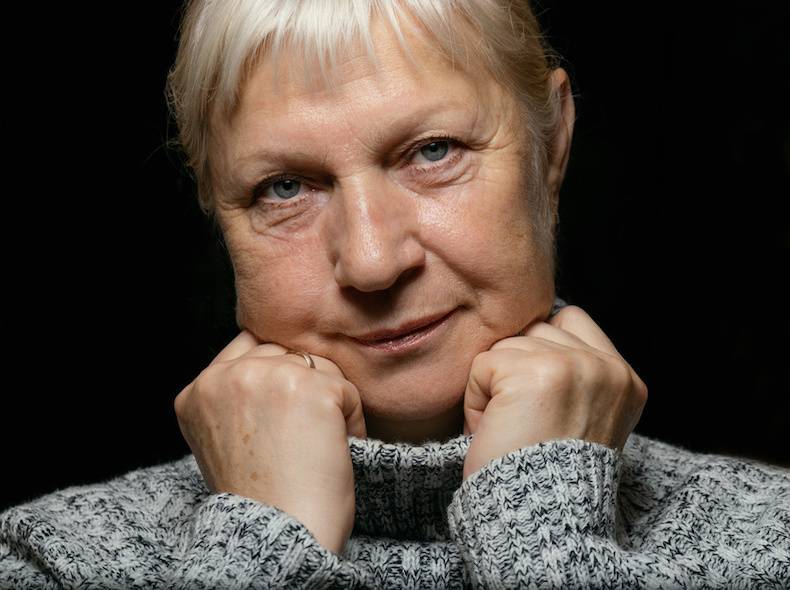
In a world where diversity is becoming more recognized and celebrated, neurodiversity stands as a crucial aspect of this spectrum. Relationships where one or both partners are on the Autism Spectrum can be rich and fulfilling, yet they may also encounter specific challenges unique to their neurodiversity. This guide aims to illuminate these challenges and explore therapy options available for neurodiverse couples, empowering adults with Autism Spectrum Disorder (ASD) to build stronger, more understanding relationships.
Embracing Neurodiversity in Relationships
What Does Neurodiverse Mean?
Neurodiversity refers to the variation in the human brain regarding sociability, learning, attention, mood, and other mental functions. In a neurodiverse relationship, at least one partner may be neurodivergent, often leading to unique dynamics.
Navigating the Distinctive Challenges in Neurodiverse Relationships
In neurodiverse relationships, where one or both partners may be on the Autism Spectrum or otherwise neurodivergent, there are specific challenges that might not be as prevalent in neurotypical partnerships. These challenges can profoundly impact the relationship’s dynamics, requiring a more nuanced understanding and approach.
Exploring the Unique Challenges in Detail
- Communication Differences
- Nature of Variations: Partners in neurodiverse relationships may find that their ways of communicating vary significantly. This could include differences in understanding non-verbal cues, processing verbal information, or expressing emotions and thoughts.
- Impact on Relationship: These differences can lead to frequent misunderstandings or misinterpretations, potentially causing feelings of frustration or isolation for both partners.
- Sensory Processing Sensitivities
- Understanding Sensory Differences: Many individuals with neurodivergent conditions experience sensory processing differences. This could mean heightened sensitivities to sounds, lights, textures, or other sensory inputs, or conversely, a need for more sensory stimulation.
- Effect on Daily Life: These sensitivities can influence basic daily activities, from choosing a restaurant to deciding on home decor. They can also play a significant role in physical intimacy, where sensory discomfort can affect closeness and connection.
- Diverse Social Needs
- Balancing Social Preferences: Neurodiverse couples often face the challenge of reconciling different social needs and preferences. For instance, one partner may enjoy large social gatherings while the other may find them overwhelming and prefer more intimate settings or solitude.
- Navigating Social Situations: Determining how to engage in social activities together, or deciding when to engage in them separately, requires ongoing communication and compromise. It’s essential to respect each other’s comfort levels and social boundaries.
These challenges in neurodiverse relationships underscore the need for a deepened understanding and tailored approaches. Recognizing and addressing these distinct aspects can lead to a more harmonious and fulfilling partnership, where both individuals feel heard, respected, and loved.
These challenges in neurodiverse relationships underscore the need for a deepened understanding and tailored approaches. Recognizing and addressing these distinct aspects can lead to a more harmonious and fulfilling partnership, where both individuals feel heard, respected, and loved.
Expanding Therapy Options for Neurodiverse Relationships
Relationship therapy for neurodiverse couples can play a pivotal role in enhancing an emotional connection. These therapies are not just about resolving conflicts or addressing challenges; they are also about strengthening the bond and understanding the rich tapestry of neurodiversity.
Comprehensive Therapeutic Approaches for Neurodiverse Couples
- Specialized Couples Therapy for Neurodiversity
- Tailored to Unique Dynamics: This form of therapy is specifically designed to cater to the distinctive needs of neurodiverse couples. It involves a deep understanding of how neurodivergent conditions like Autism Spectrum Disorder (ASD) can influence relationship dynamics.
- Building a Supportive Environment: The therapist creates a safe, non-judgmental space where both partners can express themselves freely and feel understood. This environment is crucial for effective communication and mutual understanding.
- Enhanced Communication Strategies in Therapy
- Developing Effective Communication Tools: Therapists can introduce various tools and techniques aimed at improving communication between partners. This may include learning to express emotions more clearly, developing strategies for active listening, and understanding non-verbal cues.
- Customized Approach for Each Couple: Recognizing that each neurodiverse relationship is unique, therapists often customize their approach. They may use a combination of methods like talk therapy, narrative therapy, or even creative arts therapy to address specific communication challenges.
- Additional Focus Areas in Therapy
- Emotional Intimacy and Understanding: Beyond communication, therapy can also focus on building emotional intimacy and empathy. This involves understanding each partner’s emotional needs and finding ways to fulfill them.
- Coping Strategies for External Stressors: Couples can also learn strategies to cope with external pressures, whether these are related to social expectations, family dynamics, or work-related stress.
In summary, therapy for neurodiverse couples is about more than just addressing immediate challenges; it’s about equipping both partners with the understanding and tools they need to build a resilient, fulfilling relationship. By focusing on the unique aspects of their partnership and leveraging specialized therapeutic approaches, neurodiverse couples can deepen their connection and navigate their relationship journey with greater confidence and understanding.
In summary, therapy for neurodiverse couples is about more than just addressing immediate challenges; it’s about equipping both partners with the understanding and tools they need to build a resilient, fulfilling relationship. By focusing on the unique aspects of their partnership and leveraging specialized therapeutic approaches, neurodiverse couples can deepen their connection and navigate their relationship journey with greater confidence and understanding.
Comprehensive Strategies for Overcoming Challenges in Neurodiverse Relationships
In relationships where one or both partners are neurodivergent, such as those on the Autism Spectrum, navigating the complexities can require specific, thoughtful strategies. These strategies are vital in addressing the unique challenges in communication, sensory processing, and social interaction that these relationships often encounter.
Enhanced Communication Techniques
Developing Clear and Effective Communication
- Clarity and Directness: Emphasizing direct and explicit communication helps minimize misunderstandings and ambiguities that can arise due to different communication styles.
- Active Listening and Feedback: Implementing active listening techniques and providing clear feedback can ensure that both partners feel heard and understood.
Adapting to Individual Communication Styles
- Identifying Personal Communication Patterns: Each partner should take time to understand and appreciate the other’s unique way of communicating, whether it’s verbal, non-verbal, or through alternative communication methods.
- Customized Communication Strategies: Developing personalized communication strategies can include establishing signals or keywords that have specific meanings, making it easier to convey thoughts and emotions.
Managing Sensory Processing Differences
Creating a Sensory-Conducive Living Environment
- Adjusting Home Settings: Making adjustments in the home to cater to each partner’s sensory needs. This could involve modifying lighting, reducing noise levels, or creating sensory-safe zones.
- Sensory-Friendly Lifestyle Adjustments: Beyond the home, considering sensory-friendly options in choosing restaurants, vacation spots, or entertainment can make shared experiences more enjoyable.
Preparing for Sensory Overload
- Recognizing Early Signs: Understanding the early signs of sensory overload in each other can help in taking proactive measures.
- Establishing Coping Mechanisms: Having a plan in place, such as a quiet retreat space or sensory-relief tools (like noise-canceling headphones or tactile objects), can be crucial during sensory overload situations.
Navigating Social Interaction Dynamics
Balancing Diverse Social Needs
- Understanding Individual Social Preferences: Acknowledge and respect each other’s social engagement needs, whether it involves attending social events or needing time alone.
- Joint Social Planning: Work together to plan social activities that meet both partners’ comfort levels, such as small gatherings or quiet outings.
Respecting Social Boundaries
- Open Discussions on Social Comfort Zones: Regular discussions about what social settings are comfortable or challenging for each partner can foster mutual understanding.
- Setting Boundaries with External Social Circles: Communicating and setting boundaries with friends, family, and social groups regarding social engagements can help in managing external social pressures.
By adopting these comprehensive strategies, couples in neurodiverse relationships can better navigate their unique challenges. These approaches encourage a deeper understanding and respect for each other’s needs, fostering a more harmonious and fulfilling partnership.
Enhancing and Fortifying Neurodiverse Relationships
Building a strong and understanding relationship in a neurodiverse context involves embracing each partner’s differences and actively nurturing the bond shared. This comprehensive approach not only acknowledges the challenges but also leverages the unique strengths and perspectives that neurodiversity brings into a relationship.
Deepening Understanding Through Embracing Differences
Celebrating and Leveraging Individual Strengths
- Recognizing Unique Contributions: Each partner in a neurodiverse relationship brings their own set of strengths and abilities. Identifying and celebrating these can foster a sense of appreciation and value in the relationship.
- Strength-Based Approach to Challenges: Utilizing each other’s strengths in addressing relationship challenges can lead to more creative and effective solutions.
Expanding Knowledge and Empathy through Education
- Continuous Learning About Neurodiversity: Regularly educating yourselves about the aspects of neurodiversity can deepen understanding and empathy. This can include reading literature, attending workshops, or engaging in online forums.
- Applying Knowledge to Everyday Life: Translating this education into practical strategies within the relationship can help in navigating day-to-day interactions and understanding each other’s perspectives better.
Nurturing the Relationship with Intentional Practices
Establishing Regular Emotional Check-ins
- Setting Aside Time for Discussion: Regularly scheduled times to discuss feelings, needs, and relationship dynamics can ensure ongoing communication and prevent issues from festering.
- Creating a Safe Space for Expression: These check-ins should be a safe space where both partners feel comfortable expressing themselves without judgment.
Sharing Enjoyable and Comfortable Activities
- Finding Common Ground in Activities: Engaging in activities that both partners find enjoyable and comfortable can strengthen the bond. This could range from quiet indoor activities to outdoor adventures, depending on shared interests.
- Exploring New Experiences Together: Trying new activities can be a way to explore and understand each other’s interests and comfort zones, fostering growth and shared experiences.
In a neurodiverse relationship, the journey of building a strong and understanding partnership involves a continuous process of learning, adapting, and growing together. By embracing each other’s differences, focusing on individual strengths, and actively nurturing the relationship through regular communication and shared experiences, couples can create a resilient and deeply connected partnership.
Conclusion
Navigating a neurodiverse relationship can be a journey of discovery, learning, and deep connection. Understanding the challenges in neurodiverse relationships and utilizing therapy options can greatly enhance the relationship quality for couples with ASD.
If you are in a neurodiverse relationship and looking for support to navigate its unique challenges, Contact me for couples therapy. Together, we can work towards building a stronger, more empathetic, and understanding partnership.



